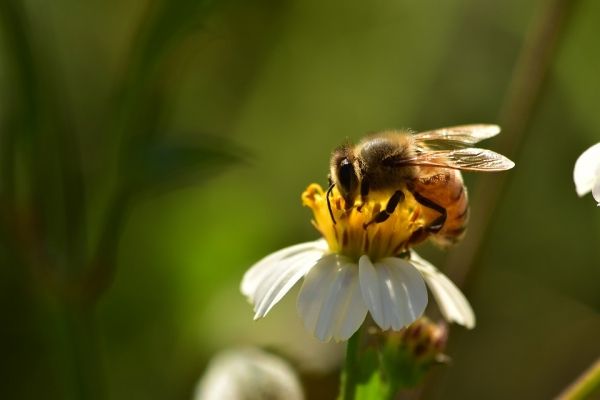Honey bees heavy with pollen and nectar foraged from wildflowers on Utah’s Uinta-Wasatch-Cache National Forest collide with tall grass and tumble to the ground. They are attempting to land alongside a hive, and I watch as they struggle to stand, fly into the box, and disgorge nectar to be made into honey.
The pollinators belong to a 96-hive apiary, trucked here to Logan Canyon for the summer to rest and rebuild their population, replenishing bees lost to disease and pesticides after months pollinating California’s almond groves. By Labor Day, the yard would house 5 million domesticated pollinators.
The honey bees are guests among about 300 native bee species in Uinta-Wasatch-Cache, including metallic green sweat bees and iridescent blue mason bees, that comb meadows rich with indigo delphinium, yellow daisies, and pumpkin-colored Indian paintbrush. Darren Cox, who owns the apiary, says the forest’s mountain snowberry shrubs make the best-tasting honey.
Cox, in a white nylon suit, elbow-length gloves and helmet covered with a veil, puffs smoke into a dove gray hive and pries out a frame coated with honey. He scrapes the viscous liquid into a paper cup.
Read more at Yale Environment 360
Photo Credit: scw1217 via Pixabay


